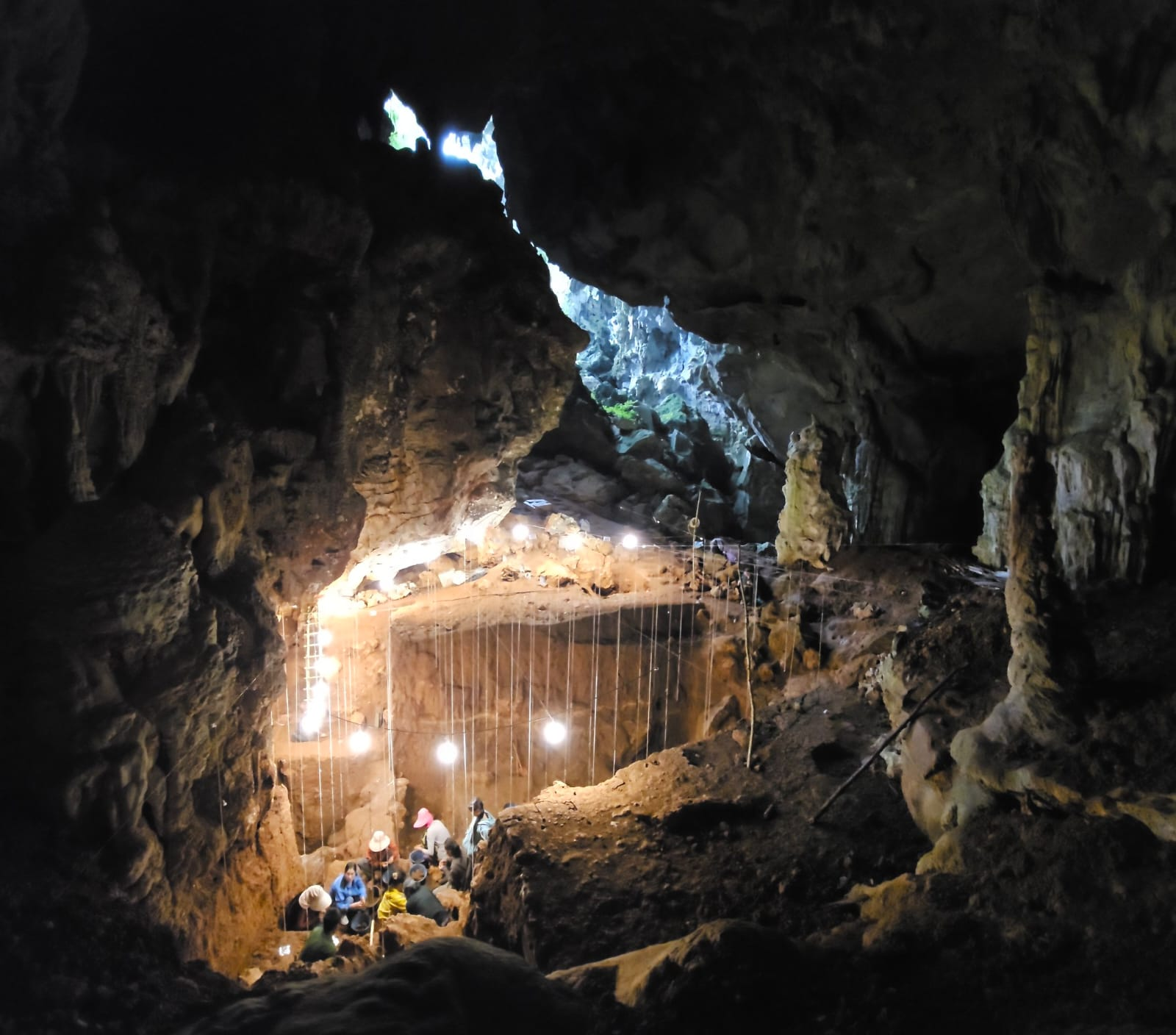Tiny pieces of charcoal have been found in sediments at the Tam Pà Ling Cave in Laos. The discoveries call into question previous confidence humans did not camp in the cave, and that remains there were instead washed inside. The cave represents our only established resource to unravel some of the biggest questions about humanity’s great expansion, making any information about how it was used precious.
There is a giant hole in our knowledge of how humans dispersed from Africa, covering eastern Asia and particularly Southeast Asia. We know modern humans must have passed through – and probably stayed – on their way from Africa to Australia, yet there is little evidence from the right time period.
The Tam Pà Ling Cave is the closest thing we have to an exception to this gaping void. Human fossils have been found at the site dating to 68,000-86,000 years ago, for the first time putting Homo sapiens in the area on a timescale similar to the oldest evidence from Australia.
However, the walls of the cave are steep enough to be hard to scale without modern climbing equipment. Paleontologists suspected the fossils had been washed in during floods, rather than the people dying or being buried in the cave. Without evidence of tools or hearths inside, this suspicion became accepted wisdom during coverage of the previous discovery.
However, the same team now has a different view. A team of researchers, including lead author of the new study Vito Hernandez, studied sediment layers deposited in the cave between 10,000-52,000 years ago. “Using a technique known as microstratigraphy at the Flinders Microarchaeology Laboratory, we were able to reconstruct the cave conditions in the past and identify traces of human activities in and around Tam Pà Ling,” Hernandez said in a statement.
Microstratigraphy involves detailed analysis of items, including ash and charcoal, that have often been overlooked by archaeologists and paleontologists seeking large-scale fossils. “This also helped us to determine the precise circumstances by which some of the earliest modern human fossils found in Southeast Asia were deposited deep inside,” Hernandez added. Abundant traces of burnt material were found, indicating either humans were making fires within the cave or near the entrance, or wildfires were occurring outside with charcoal washed inside.

Tam Pà Ling today looks like a fairy grotto, but once it was a forbidding place to enter. If humans used it they needed a good reason.
Image Credit: Vito Hernandez
Forest fires in the area would be interesting to those hoping to make sense of the fossils found there, since the area is too wet to sustain fires today. We know the location was sometimes much more arid, and remnants of burning could help us understand those periods.
However, campfires would be far more interesting still, showing the cave was important to the humans whose remains we have found, not just somewhere floods took their bones after death. It would open up questions about why people would make the difficult and dangerous journey in and out, and provide encouragement to keep looking for tools.
Hernandez, a PhD student at Flinders University told IFLScience; “The only way to distinguish [between these scenarios] is to check the landscape outside,” for traces of fire. This, he said, is “A bigger project waiting to happen.”
If it turns out the fire was human-made, it would raise an even bigger question of when such evidence first appeared. Samples dating back earlier than those studied for this paper have been collected, Hernandez told IFLScience, but the analysis is not complete. Potentially, however, this could provide a much more precise way of timing human arrival at the site, and possibly the whole region.
However, even if humans did use Tam Pà Ling, which Hernandez thinks is likely, it may not have been so popular at all times. Hernandez told IFLScience that during the periods when conditions outside the cave were hot and arid, it would have been a cool refuge, perhaps attractive enough that people were willing to make the difficult climb. “We’re talking about Homo sapiens here,” Hernandez said to IFLScience. “By this point they had colonized every ecological niche in the world aside from the Arctic/Antarctic.”
Proving the cave was used at these times would be a piece in a much larger puzzle that Hernandez’s supervisor, Professor Mike Morley, is trying to solve: what made ancient peoples disperse into new habitats.
The work could also prove significant for another reason. Organic material decays much more quickly in hot, wet environments, which is thought to be part of the reason we have so little information about the first H. sapiens in Southeast Asia. Paleontologists are usually resigned to this problem. However, the authors write in the study that “By showing that materials may preserve differently within the same microstratigraphic units, we challenge the general assumption that preservation in tropical environments is always poor.”
Sometimes, it can be worth searching for signs of items that, including ancient DNA, may have survived better than has been expected.
The study is published in the journal Quaternary Science Reviews
Source Link: Traces Of Fire Found In Cave Containing Southeast Asia’s Oldest Modern Human Remains